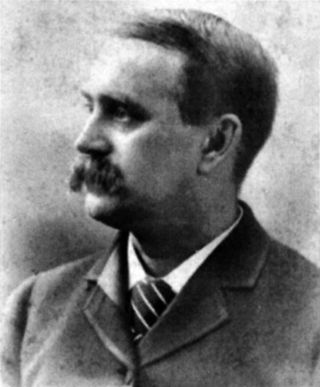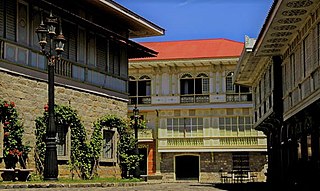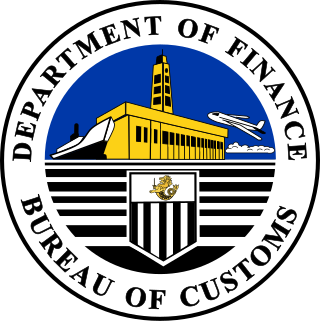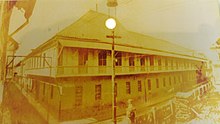
Ermita is a district in Manila, Philippines. Located at the central part of the city, the district is a significant center of finance, education, culture, and commerce. Ermita serves as the civic center of the city, bearing the seat of city government and a large portion of the area's employment, business, and entertainment activities.

Dumaguete, officially the City of Dumaguete, is a 2nd class component city and capital of the province of Negros Oriental, Philippines. According to the 2020 census, it has a population of 134,103 people. It is the most populous city and the smallest city by land area in Negros Oriental.

Rizal Park, Luneta, also known as Luneta Park or simply Luneta, is a historic urban park located in Ermita, Manila. It is considered one of the largest urban parks in the Philippines, covering an area of 58 hectares. The site on where the park is situated was originally known as Bagumbayan during the Spanish colonial period. It is adjacent to the historic Walled City of Intramuros.

Boljoon, officially the Municipality of Boljoon, is a 5th class municipality in the province of Cebu, Philippines. According to the 2020 census, it has a population of 17,525 people.

Dean Conant Worcester, D.Sc., FRGS was an American zoologist, public official, and authority on the Philippines. He was born at Thetford, Vermont, and educated at the University of Michigan. Worcester's involvement with the Philippines began in 1887 when he joined a scientific expedition to the region as a junior member. This experience laid the groundwork for his controversial career in the early American colonial government, which commenced in 1899. He held firm beliefs in the colonial mission and vehemently opposed Philippine independence. Worcester's influence extended as he served as the Secretary of the Interior of the Philippine Islands until 1913. Afterward, he shifted his focus to business endeavors, particularly in coconut farming and processing, cattle raising, and maritime shipping lines. He died in the Philippines, leaving behind a legacy of both public service and entrepreneurial success.

The Philippine Atmospheric, Geophysical and Astronomical Services Administration is the National Meteorological and Hydrological Services (NMHS) agency of the Philippines mandated to provide protection against natural calamities and to ensure the safety, well-being and economic security of all the people, and for the promotion of national progress by undertaking scientific and technological services in meteorology, hydrology, climatology, astronomy and other geophysical sciences. Created on December 8, 1972, by reorganizing the Weather Bureau, PAGASA now serves as one of the Scientific and Technological Services Institutes of the Department of Science and Technology.

The National Museum of Anthropology, formerly known as the Museum of the Filipino People, is a component museum of the National Museum of the Philippines which houses Ethnological and Archaeological exhibitions. It is located in the Agrifina Circle, Rizal Park, Manila adjacent to the National Museum of Fine Arts building.

Juan Marcos Arellano y de Guzmán, or Juan M. Arellano, was a Filipino architect, best known for Manila's Metropolitan Theater (1935), Legislative Building, the Manila Central Post Office Building (1926), the Rizal Memorial Sports Complex (1934), the Central Student Church, the old Jaro Municipal Hall (1934) and the Old Iloilo City Hall (1935) in Iloilo, the Negros Occidental Provincial Capitol (1936), the Cebu Provincial Capitol (1937), the Bank of the Philippine Islands Cebu Main Branch (1940), Misamis Occidental Provincial Capitol Building (1935), Cotabato Municipal Hall (1940) and the Jones Bridge during the pre-war era.

The Philippine Normal University is a public coeducational teacher education and research university in the Philippines. It was established in 1901 through Act No. 74 of the Philippine Commission "for the education of natives of the Islands in the science of teaching". It has campuses in Manila, North Luzon, South Luzon, Visayas, and Mindanao. Pursuant to Republic Act No. 9647, it is the country's National Center for Teacher Education.

The architecture of the Philippines reflects the historical and cultural traditions in the country. Most prominent historic structures in the archipelago are influenced by Austronesian, American architectures.

The National Archives of the Philippines is an agency of the Republic of the Philippines mandated to collect, store, preserve and make available archival records of the Government and other primary sources pertaining to the history and development of the country. It is the primary records management agency, tasked to formulate and implement the records schedule and vital records protection programs for the government. The archives as they are organized today are a result of the passage of Republic Act 9470 in 2007, but its roots can be traced back to at least the 19th century during the Spanish colonial government.

The Saint Matthias Parish Church, commonly known as Tumauini Church, is a Roman Catholic church in the municipality of Tumauini, Isabela, Philippines, within the jurisdiction of the Diocese of Ilagan. It became a separate parish independent from Cabagan under the advocacy of Saint Matthias in 1751.

The Archdiocesan Shrine of Patrocinio de Maria Santisima, commonly known as Boljoon Church, is a Roman Catholic church dedicated to the Our Lady of the Patronage in the municipality of Boljoon, Cebu, Philippines, under the Roman Catholic Archdiocese of Cebu.

The San Isidro Labrador Parish Church, commonly known as Lazi Church, is a Roman Catholic church in the municipality of Lazi, Siquijor, Philippines within the jurisdiction of the Diocese of Dumaguete. It became an independent parish in 1857 under the advocacy of Saint Isidore the Laborer.

The Bureau of Customs is a Filipino government agency that is responsible for the collecting of customs duties, excise duties, and other indirect taxes in the Philippines. It is part of the Philippines Department of Finance.

The National Museum of Natural History is the national natural history museum of the Philippines. It is located along Agrifina Circle in Rizal Park, Manila.

The National Planetarium, also known as the National Museum Planetarium, was a planetarium owned and operated by the National Museum of the Philippines in Manila. It was a 16-meter (52 ft) dome located in Rizal Park between the Japanese Garden and Chinese Garden on Padre Burgos Avenue in the central district of Ermita. It opened on October 8, 1975.

Cebu's 2nd congressional district is one of the seven congressional districts of the Philippines in the province of Cebu. It has been represented in the House of Representatives of the Philippines since 1916 and earlier in the Philippine Assembly from 1907 to 1916. The district consists of the southern Cebu municipalities of Alcoy, Argao, Boljoon, Dalaguete, Oslob, Samboan and Santander. It is currently represented in the 19th Congress by Edsel Galeos of the Lakas-CMD.

The Iloilo Customs House is a historical building in Iloilo City, Philippines. It was built in 1916 to a design by American architect Ralph Harrington Doane, then Consulting Architect of the Bureau of Public Works in the Philippine Islands. Among the three American-era customs houses in the Philippines, it is the second largest and second oldest. The building is located at Muelle Loney Street and Aduana Street along the Iloilo River and still houses the offices of the Bureau of Customs and the Bureau of Immigration in Iloilo City.































